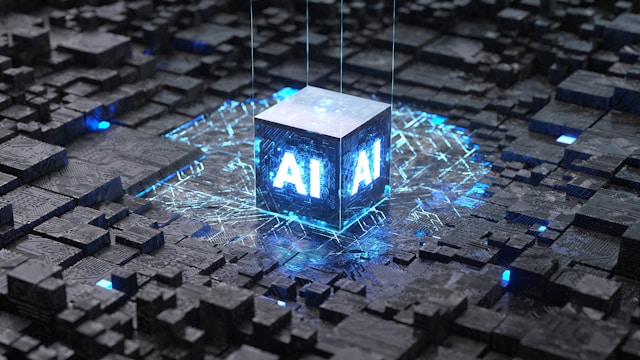
Think about the complex systems powering the websites and applications you use everyday. Behind the scenes these servers, networks, and software must work in harmony to keep everything running. Not long ago, this demanded constant human attention with teams watching dashboards, scrambling when things broke, and absorbing the costs of downtime. It was slow, expensive, and frustrating for users.
That era is ending. AI and automation are transforming digital infrastructure from something reactive to something resilient, adaptive, and largely self-managing. The focus is no longer on fixing downtime, but on preventing it altogether.
Stop Reacting, Start Preventing
Infrastructure management has long felt like firefighting: alarms, crashes, hurried fixes, and temporary relief until the next incident. This reactive cycle drains resources, frustrates users, limits innovation and prevents teams from focusing on strategic work that drives growth.
AI-powered diagnostics offer a powerful solution. By analyzing massive streams of performance data, these systems learn what “normal” looks like, then detect small anomalies before they snowball into outages—like a doctor catching early warning signs.This is the core promise of AI in infrastructure: predictive maintenance.
Automated workflows turn these predictions into action. Instead of alerting a human at 3 a.m., the system automatically runs a workflow: cleaning up disk space, expanding capacity, or rerouting traffic. Problems are fixed before they’re felt and the result is less downtime, smoother operations, and IT teams free to focus on growth.
The best part is that all of this happens instantly.
Get More Done with Less
Optimization at scale is nearly impossible for humans. Balancing performance, costs, and resources across constantly shifting variables requires constant fine-tuning.
AI excels at finding the sweet spot. It can analyze real-time traffic patterns while understanding application resource demands. It also knows the cost implications of different cloud configurations. Based on this analysis, AI systems can automatically make adjustments. They might scale server resources up before a predicted traffic surge or scale them down during quiet periods to save costs, while optimizing database queries on the fly. They might also cache content more intelligently.
All these actions happen continuously and the result is consistently faster application performance. Users experience quicker page loads and smoother interactions. Businesses benefit from lower operational costs when resources are used when truly needed. Efficiency increases dramatically.
Automation handles the tedious tuning. Tasks like clearing caches, optimizing images for the web, or compressing files used to be manual chores—they were time-consuming and often neglected. Now, automation handles these routine optimizations reliably, while being on schedule or triggered by events. This frees up human expertise for more valuable challenges and performance becomes consistently high without constant manual effort.
Say Goodbye to Repetitive Work
Perhaps the most immediate impact for many businesses is the liberation from repetitive, time-consuming tasks. Managing infrastructure often involves a lot of necessary but low-value and tedious work. Think about creating standard content updates or consider setting up and monitoring email campaigns. Handling form submissions requires the same amount of processing as basic security scans need running.
These tasks are essential to any business, however, they consume hours that could be spent on strategy, development, or customer engagement.
AI-powered automation is taking over these workflows. Modern platforms offer tools where you define the process once. The AI then executes it flawlessly every time. For example:
-
Content & Marketing: AI can draft initial social media posts based on keywords and personalize email campaign content for different segments. It can automatically send follow-up emails based on user actions. These workflows can trigger content publication based on schedules or events.
-
User Interaction: AI Chatbots can handle basic customer inquiries instantly. Automated systems can process form submissions while sorting requests and sending confirmation emails. They can even route complex issues to the right human agent.
-
Security & Maintenance: Automated workflows perform regular security scans by applying critical software patches immediately. Any suspicious login attempts are thoroughly monitored and malicious IP addresses are automatically blocked. They handle backups reliably without fail.
AI is not replacing human beings; it is empowering them. By automating the predictable, repetitive tasks, AI frees up skilled IT professionals, marketers, and developers. They can focus on creative problem-solving, building new features and analyzing data for insights. Their true focus could then be on improving the user experience by implementing those strategic initiatives that directly impact the business. While the technology handles the operational heavy lifting, humans provide the vision and judgment.
Build Stronger, Safer Systems
Downtime is costly and security breaches are devastating. Ensuring the resilience and security of digital infrastructure is paramount; AI and automation are becoming critical allies in this ongoing battle.
AI enhances security dramatically. Traditional security relies on known threat signatures. Hackers constantly develop new methods and AI systems are analyzing those behavior patterns constantly. They learn what normal user and system activity looks like so they can detect anomalies that might signal a novel attack—this could be unusual data access patterns or unexpected file changes. It could also be suspicious network traffic.
AI identifies these threats faster than any human and can then trigger automated responses that might isolate affected systems and block malicious traffic instantly. Some systems are also set up to alert security teams with detailed context on the very first sighting. This proactive threat hunting makes infrastructure significantly harder to compromise.
Automation ensures consistent security hygiene. Human error is a major security risk for businesses. Forgetting to apply a patch is minor and missing a configuration setting can happen, but even with these routine tasks, automation removes risk completely.
Security patches get applied the moment they are released, critical updates take place automatically and system configurations are continuously checked while being automatically corrected if they drift from the secure baseline. Backup routines run without fail and human intervention—disaster recovery processes can be tested automatically too. This creates a consistently secure environment and reduces the attack surface by minimizing the window of vulnerability.
Resilience is built-in. Automated failover systems ensure continuity so in case if one server or data center encounters issues, traffic is instantly rerouted. AI can predict these potential capacity bottlenecks before they cause slowdowns and automatically provision resources to handle load spikes; creating infrastructure that bends but doesn’t break by providing a stable, reliable foundation for critical business operations. Users will in turn trust services that are always available.
Technology for Everyone
A crucial and often overlooked aspect of this transformation is accessibility. Historically, sophisticated infrastructure management tools required deep expertise. Large enterprises with big budgets and dedicated teams could afford them but small and medium-sized businesses (SMBs) often struggled. They lacked the resources for complex setups or large IT departments.
AI and automation are changing this dynamic. Modern cloud platforms increasingly bake these intelligent capabilities into their core offerings. Powerful diagnostics, automated scaling, security features, and workflow tools are becoming standard and are accessible through intuitive interfaces, while requiring minimal configuration. This is a form of democratization. SMBs now have access to levels of operational intelligence and automation previously reserved for tech giants, to achieve high performance and ensure strong security. They can benefit from predictive maintenance, all without needing to hire large teams of specialized engineers. This levels the playing field and allows businesses of all sizes to focus on their core offerings—relying on smarter infrastructure that just works.
Adapt to What’s Next
The reshaping of digital infrastructure by AI and automation is not a distant future; it is happening right now throughout 2025 and the benefits are clear: higher uptime, better performance, stronger security, lower costs, and liberated human talent. Ignoring this shift means falling behind. Competitors leveraging these tools will operate more efficiently and offer more reliable services. They will also innovate faster.
Adoption requires a mindset shift. Leaders must move beyond seeing infrastructure as just hardware and cables. It is now an intelligent, adaptable layer which requires investing in platforms that embrace AI and automation, as the crucial next steps into the evolutionary nature of technology. This doesn’t necessarily mean massive upfront costs. Many of these capabilities are available through modern cloud services, but the key is choosing partners committed to integrating these technologies deeply, accessibly and affordably.
Upskilling teams is essential. While automation handles routine tasks, human beings remain vital. Their role now moves towards overseeing AI systems and the need to design effective automated workflows to interpret AI insights. The focus should now be on working towards complex problem-solving and strategic innovation. Providing training on managing and collaborating with AI tools is critical for success.
The Future is Autonomous
The journey is just beginning. The AI and automation we see today represent early steps and future advancements will bring even greater levels of autonomy. We will witness systems that learn and adapt continuously by optimizing themselves in increasingly sophisticated ways, that predict and prevent issues with even greater accuracy. Security will become more proactive and intelligent and the line between human oversight and machine operation will continue to blur.
The fundamental reshaping of digital infrastructure is undeniable. We are building a future where systems are not just faster, but profoundly smarter and more self-sufficient. They predict problems and fix them, themselves but also optimize relentlessly and handle the mundane.
This frees us, the humans, to focus on what we do best: imagining, creating, and connecting. The intelligent, automated infrastructure foundation is no longer a luxury as it is rapidly becoming the essential bedrock for any successful digital presence in 2025 and beyond. Embracing this transformation is not merely an IT decision; it is a fundamental business imperative for resilience, efficiency, and growth.





